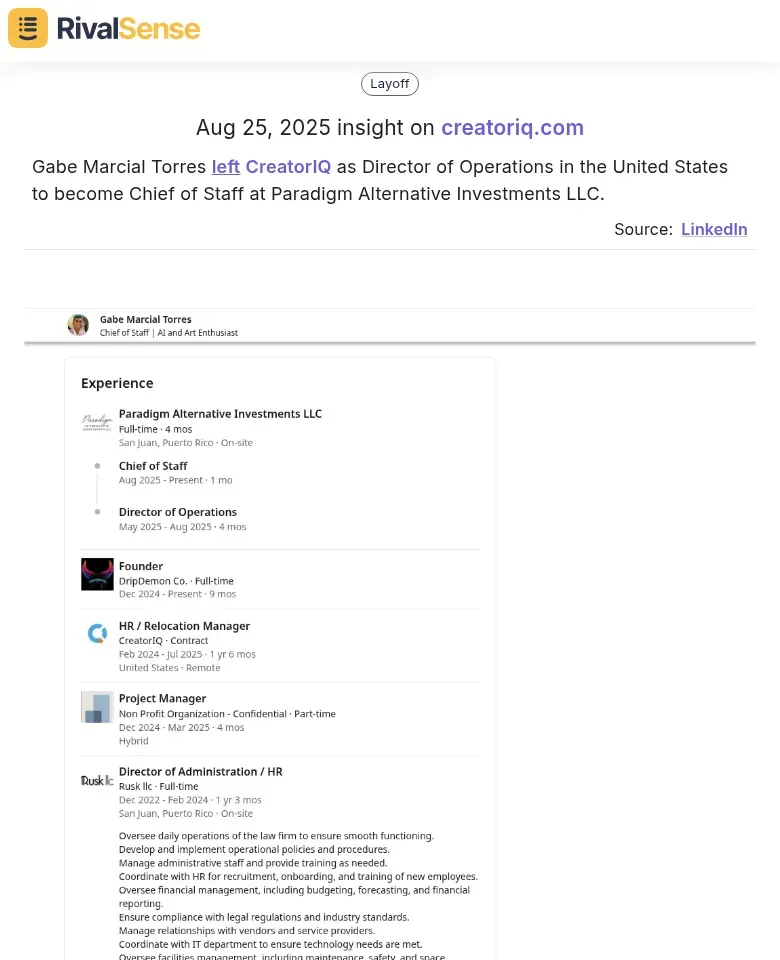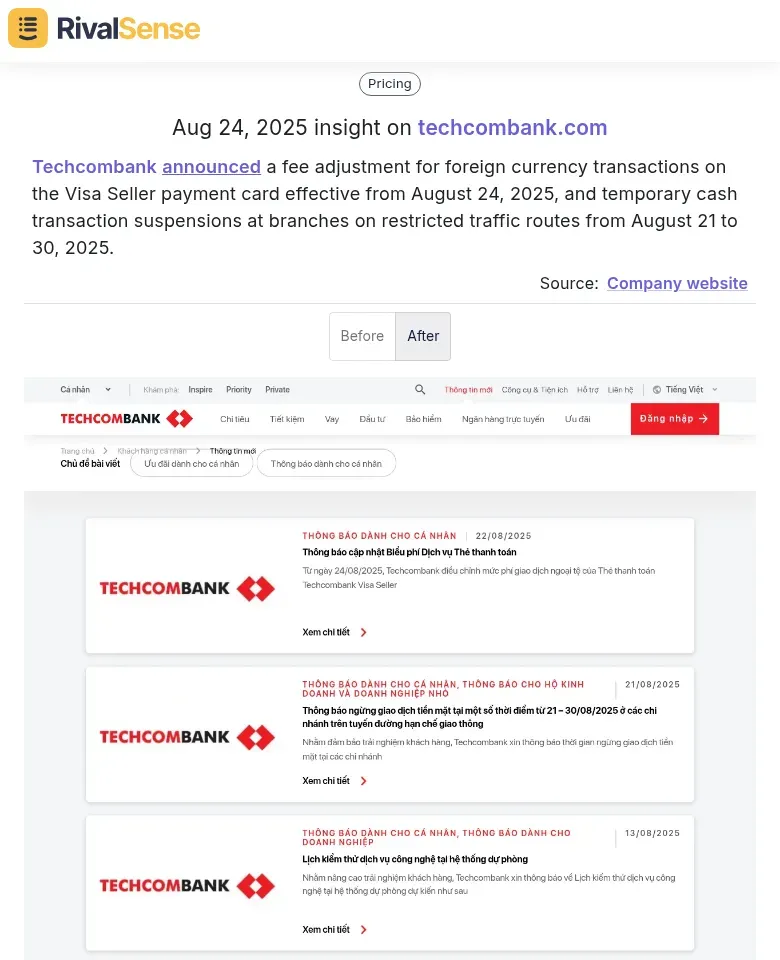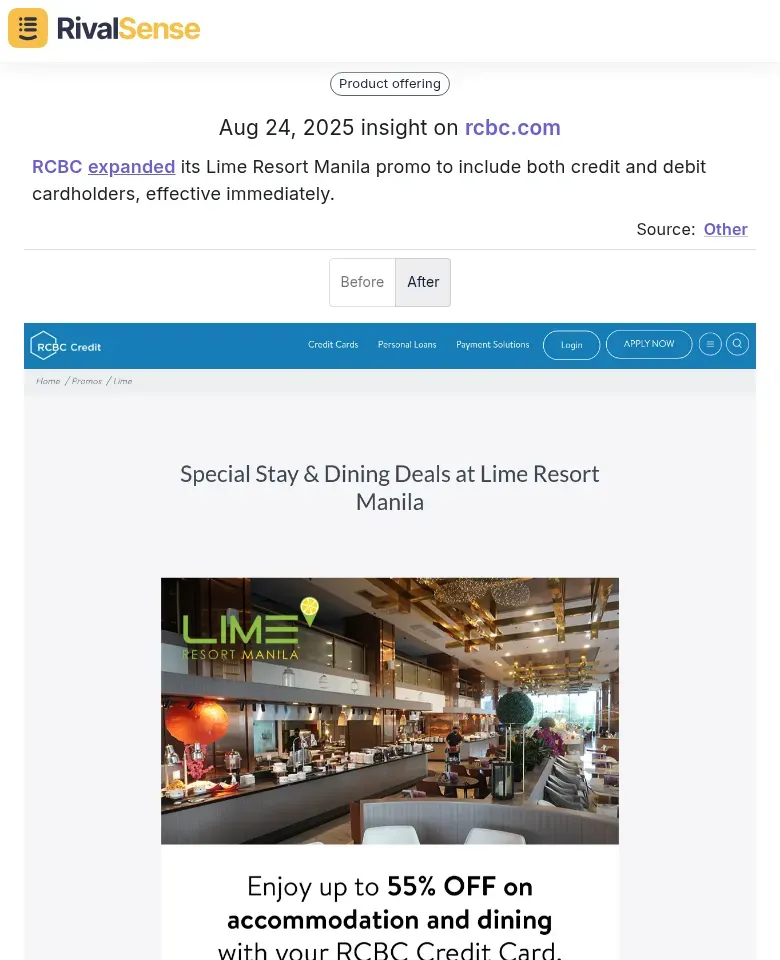Measure Custom Software Partnership ROI: Key Metrics and Practical Strategies
Measuring ROI in custom software partnerships is critical for strategic decision-making, as it validates investments and guides future collaborations. These partnerships enhance innovation by combining diverse expertise, reduce costs through shared resources, and accelerate time-to-market by 30% on average, according to PwC research. However, quantifying benefits poses challenges, including intangible gains like improved user satisfaction and competitive advantage.
Staying aware of competitor movements can provide valuable context for your partnership decisions. For example, RivalSense recently tracked this management change:

Gabe Marcial Torres left CreatorIQ as Director of Operations in the United States to become Chief of Staff at Paradigm Alternative Investments LLC.
Tracking executive movements like this can reveal industry trends and potential partnership opportunities that might impact your ROI calculations and strategic planning.
To overcome measurement challenges, implement structured metrics: track quantitative data (e.g., revenue increase, cost savings) and qualitative feedback (e.g., user surveys, NPS scores). Practical steps: set SMART goals pre-development, use analytics tools like Google Analytics, and establish regular feedback loops with stakeholders. This ensures you capture both financial returns and strategic value, maximizing partnership success.
Key Performance Metrics for Measuring Partnership ROI
To effectively measure the ROI of custom software partnerships, focus on three key metric categories. Financial metrics include ROI ratio calculations (Net Profit / Total Costs × 100), cost savings from reduced manual labor, revenue generation from new market opportunities, and net profit tracking. For example, if your $50,000 investment yields $20,000 in profit, that's a 40% ROI.
Monitoring competitor pricing changes can provide valuable benchmarks for your financial metrics. RivalSense recently captured this banking fee adjustment:

Techcombank announced a fee adjustment for foreign currency transactions on the Visa Seller payment card effective from August 24, 2025, and temporary cash transaction suspensions at branches on restricted traffic routes from August 21 to 30, 2025.
Such pricing intelligence helps you understand market trends and validate your own cost structures when calculating partnership ROI.
Operational metrics track time-to-market reduction (aim for 25-50% faster deployment), productivity gains (measure hours saved per task), and efficiency improvements through automated workflows. Qualitative metrics assess user adoption rates (target >80% active usage), customer satisfaction via NPS scores, and employee engagement through feedback surveys. Practical tip: Use a balanced scorecard approach, monitor these metrics quarterly, and adjust strategies based on performance data to maximize partnership value.
Methods for Calculating and Analyzing ROI
To accurately measure custom software partnership ROI, implement these proven methods:
Cost-Benefit Analysis: Start by quantifying all costs - development ($50k-$500k+), implementation, training (15-20% of project cost), and ongoing maintenance (20% annually). Weigh against tangible benefits: increased sales (CRM systems boost revenue 15-40%), productivity gains (automation saves 20-30 hours weekly), and cost reductions. Tip: Use a spreadsheet template tracking both hard and soft ROI over 3-5 years.
ROI Formula Application: Apply the standard formula: ROI = (Net Profit / Total Costs) × 100. Example: $250k investment yielding $400k benefits = 60% ROI. Industry benchmarks show 5-20% is typical, with top performers achieving 40-100%. Step-by-step: 1) Sum all costs 2) Calculate net profit (benefits minus costs) 3) Divide profit by costs 4) Multiply by 100. Checklist: Include hidden costs like employee time and infrastructure.
Risk Analysis: Evaluate three scenarios using probability-weighted analysis. Best-case: 20% cost savings, 30% revenue increase. Worst-case: 40% cost overruns, 15% lower adoption. Most-likely: 10% variance. Practical tip: Assign probabilities (20% worst, 60% likely, 20% best) and calculate expected ROI. Mitigation: Buffer budgets by 15-25% and phase implementations to validate assumptions.
Best Practices for Maximizing Partnership ROI
To maximize partnership ROI, start by setting SMART objectives: Specific (e.g., 'Increase joint revenue by 20% in 6 months'), Measurable (track KPIs like cost savings), Achievable (based on resources), Relevant (aligned with business goals like market expansion), and Time-bound (with deadlines). Implement agile methodologies—use sprints for iterative development, hold weekly reviews to assess progress, and employ continuous monitoring tools (e.g., dashboards for real-time metrics) to make data-driven adjustments.
Leverage outsourcing for non-core tasks to cut costs by up to 70%, and invest in training programs to upskill teams, enhancing capabilities. Practical tips: Create a checklist for regular goal reassessment, use cost-benefit analysis for outsourcing decisions, and schedule quarterly training sessions to maintain competitive edge.
Case Studies and Real-World Applications
Successful custom software partnerships deliver measurable ROI through strategic alignment. A retail chain implemented a tailored inventory system, reducing stock wastage by 30% and increasing sales by 25% within one quarter. A financial services firm revamped its client platform, cutting customer service inquiries by 50% and boosting engagement by 40%. These successes stem from clear KPIs, user-centric design, and iterative feedback.
Partnership expansions in the market can signal successful ROI strategies worth studying. RivalSense tracked this recent banking partnership extension:

RCBC expanded its Lime Resort Manila promo to include both credit and debit cardholders, effective immediately.
Monitoring such partnership expansions provides real-world examples of successful collaborations that likely delivered strong ROI, offering valuable lessons for your own partnership strategies.
Failures often result from poor communication and scope creep. One logistics partnership missed ROI targets due to inadequate risk management, leading to 68% higher failure rates. Corrective measures include establishing clear communication protocols, using risk registers, and implementing agile methodologies with bi-weekly sprints for continuous alignment.
Industry benchmarks vary: manufacturing targets 20-25% ROI, retail 15-20%, and healthcare 10-15%. Compare your partnership against these standards by tracking cost savings, revenue generation, and user adoption rates. Practical tip: Conduct quarterly ROI reviews using the formula (Net Benefit / Cost) × 100% and adjust strategies based on real-time data to stay competitive.
Conclusion and Next Steps
In summary, effective ROI measurement in software partnerships requires tracking key metrics like cost savings, revenue generation, and user adoption. Implement a structured feedback system with regular sprint reviews and priority matrices to integrate stakeholder input. For ongoing optimization, conduct quarterly audits of KPIs, use agile methodologies for iterative improvements, and foster open communication through tools like Slack or Teams.
Actionable steps: 1) Assess current partnerships using a SWOT analysis, 2) Set SMART goals for future collaborations, 3) Establish a RACI matrix for clear roles. Now, take action: evaluate your existing partnerships, plan strategic alliances, and leverage tools like RivalSense for competitor insights to stay ahead.
Ready to gain competitive intelligence for your partnership strategies? Try out RivalSense for free at https://rivalsense.co/ and get your first competitor report today to stay informed about market movements that could impact your ROI calculations and strategic decisions.
📚 Read more
👉 How Caterpillar Countered Rolls-Royce's Saudi Rail Win: A Competitive Intelligence Case Study
👉 Extracting Financial Insights from Facebook Competitor Analysis
👉 The Ultimate Luxury Fashion Partnership Compliance Checklist
👉 Leverage Competitor Pricing Insights for Strategic Partnership Termination
👉 OpenAI's New Developer Portal: What It Means for Your Competitive Strategy
